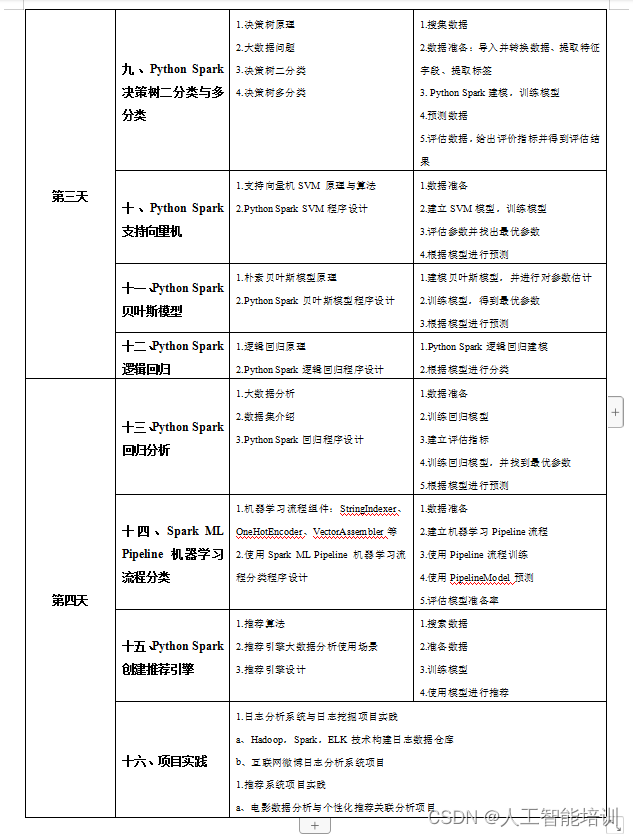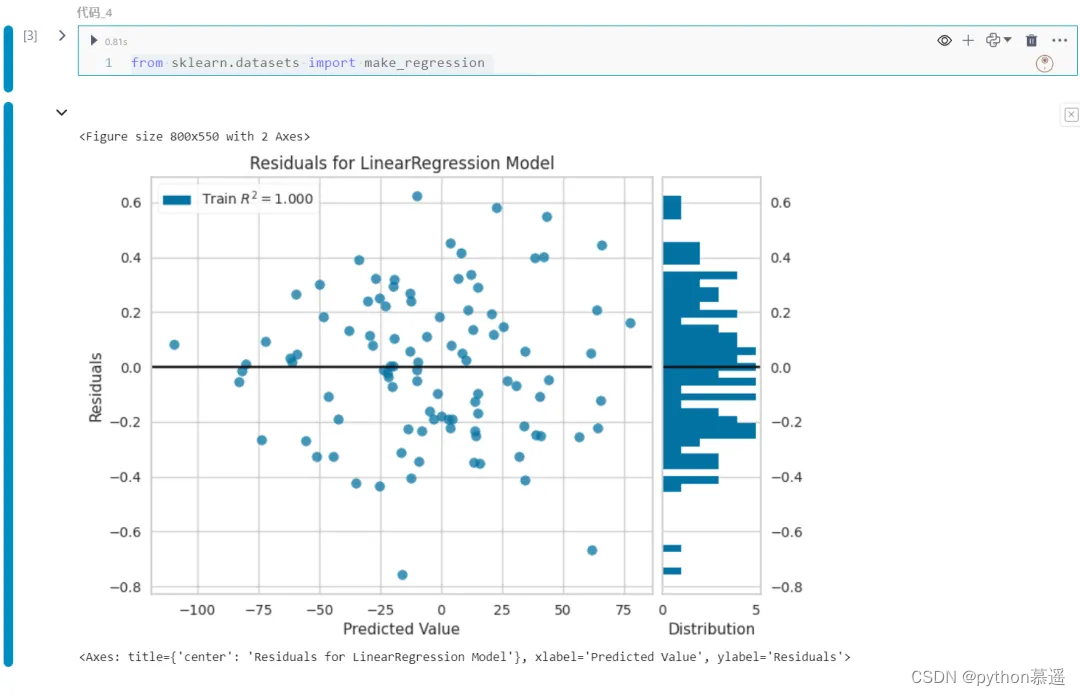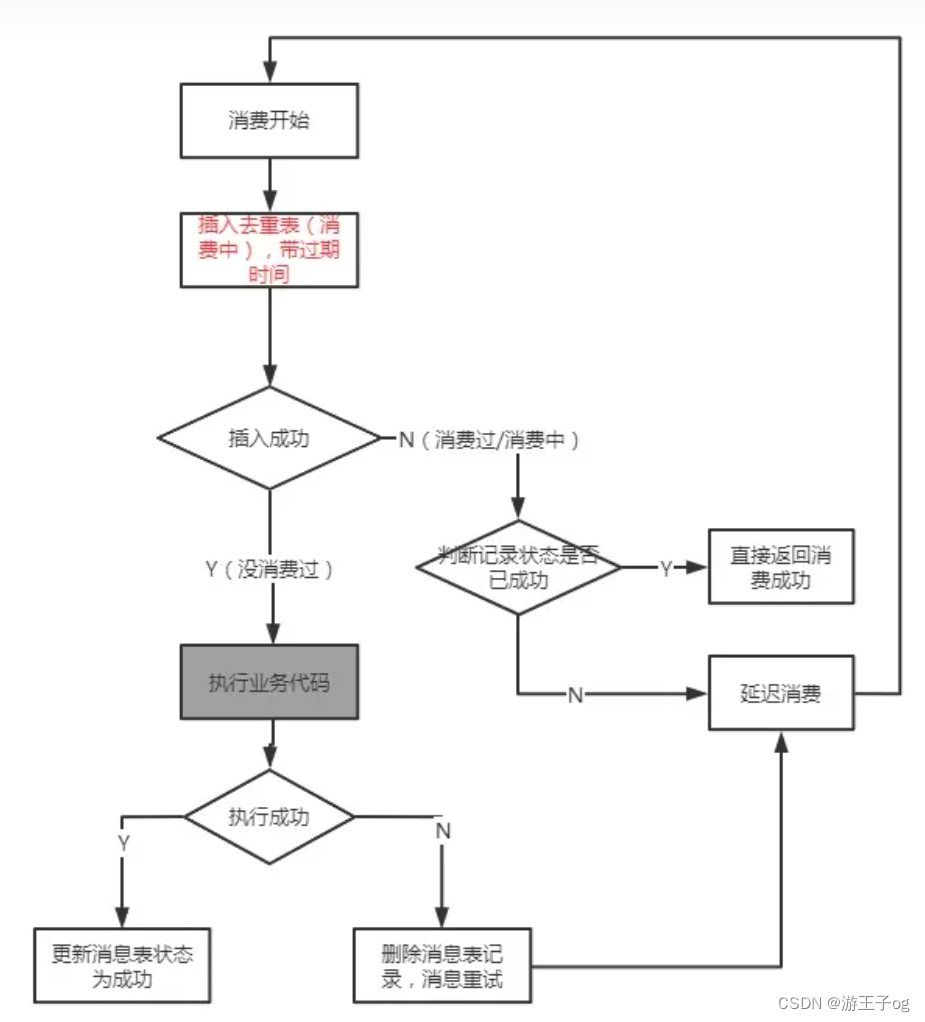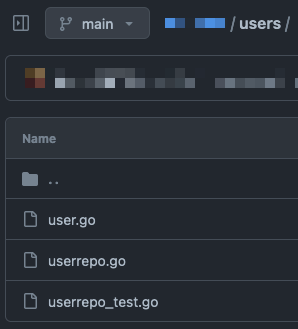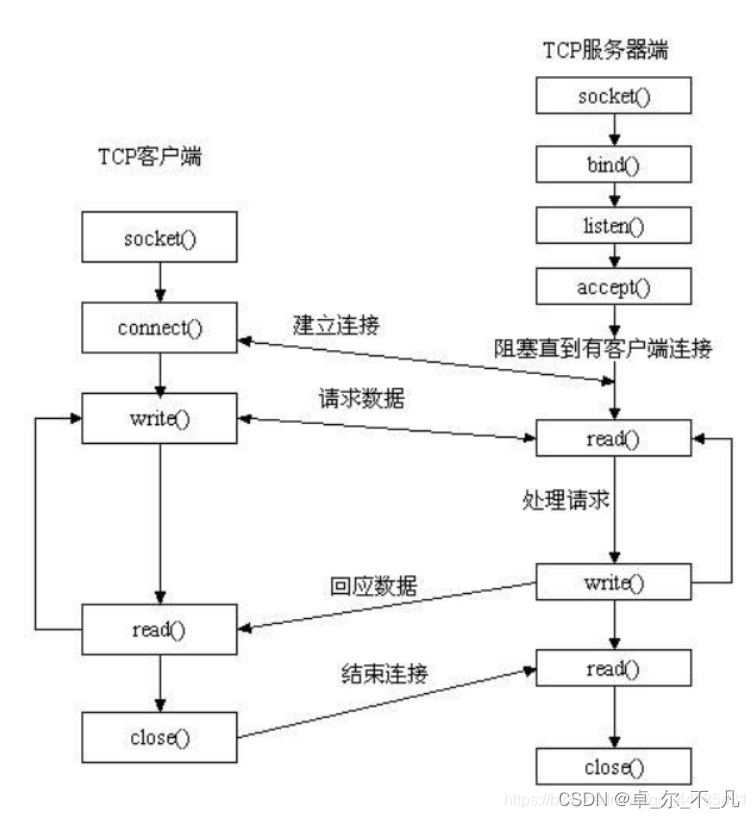传送门:
- 《2024.5组队学习——MetaGPT(0.8.1)智能体理论与实战(上):MetaGPT安装、单智能体开发》
- 《2024.5组队学习——MetaGPT(0.8.1)智能体理论与实战(中):订阅智能体OSS实现》
文章目录
- 一、 快速入门:软件公司
- 1.1 定义动作
- 1.2 定义角色
- 1.3 定义团队
- 二、多智能体交互机制
- 2.1 Environment
- 2.2 role
- 2.3 Team
- 三、示例
- 3.1 智能写诗
- 3.2 软件公司(略)
- 3.3 智能体辩论
- 3.3.1 定义动作
- 3.3.2 定义角色
- 3.3.3 创建团队并添加角色
- 四、作业
- 4.1 基础作业
- 4.2 进阶作业:重写babyagi
- 4.2.1 babyagi简介
- 4.2.2 babyagi问答
- 学习资料:项目地址——hugging-multi-agent、在线阅读、MetaGPT项目、MetaGPT中文文档
- 优秀作业链接:《MetaGPT环境搭建和尝试》、Destory的《MetaGPT教程笔记》、乐正萌的《MetaGPT教程Task3 》、 GISer Liu的《基于MetaGPT构建单智能体》、《MetaGPT课程3作业》
一、 快速入门:软件公司
参考官方文档《多智能体入门》、软件公司完整代码:build_customized_multi_agents.py
一些复杂的任务通常需要协作和团队合作,在MetaGPT框架下,用户可以通过少量代码实现多智能体交互,共同完成更复杂的任务。下面以软件公司为示例,开发一个智能体团队。
- 定义三个角色:一位编码人员(写代码)、一名测试人员(测试代码)和一名审阅人员(评价测试结果)。
- 基于标准作业程序(SOP)确保每个角色遵守它。通过使每个角色观察上游的相应输出结果,并为下游发布自己的输出结果,可以实现这一点。
- 初始化所有角色,创建一个带有环境的智能体团队,并使它们之间能够进行交互。
在《2024.5组队学习——MetaGPT智能体理论与实战(上)》第三章单智能体入门中,我们实现了具有SimpleWriteCode 动作的SimpleCoder 角色,用于接收用户的指令并编写主要代码。我们可以以相同的方式定义其它两个角色SimpleTester、SimpleReviewer及其对应的动作SimpleWriteTest、SimpleWriteReview 。
1.1 定义动作
class SimpleWriteCode(Action):
PROMPT_TEMPLATE: str = """
Write a python function that can {instruction}.
Return ```python your_code_here ```with NO other texts,
your code:
"""
name: str = "SimpleWriteCode"
async def run(self, instruction: str):
prompt = self.PROMPT_TEMPLATE.format(instruction=instruction)
rsp = await self._aask(prompt)
code_text = parse_code(rsp)
return code_text
class SimpleWriteTest(Action):
PROMPT_TEMPLATE: str = """
Context: {context}
Write {k} unit tests using pytest for the given function, assuming you have imported it.
Return ```python your_code_here ```with NO other texts,
your code:
"""
name: str = "SimpleWriteTest"
async def run(self, context: str, k: int = 3):
prompt = self.PROMPT_TEMPLATE.format(context=context, k=k)
rsp = await self._aask(prompt)
code_text = parse_code(rsp)
return code_text
class SimpleWriteReview(Action):
PROMPT_TEMPLATE: str = """
Context: {context}
Review the test cases and provide one critical comments:
"""
name: str = "SimpleWriteReview"
async def run(self, context: str):
prompt = self.PROMPT_TEMPLATE.format(context=context)
rsp = await self._aask(prompt)
return rsp
1.2 定义角色
接下来,我们需要定义三个具有各自动作的Role:
SimpleCoder具有SimpleWriteCode动作,接收用户的指令并编写主要代码SimpleTester具有SimpleWriteTest动作,从SimpleWriteCode的输出中获取主代码并为其提供测试套件SimpleReviewer具有SimpleWriteReview动作,审查来自SimpleWriteTest输出的测试用例,并检查其覆盖范围和质量
整个软件公司的运作机制如下:

如上图的右侧部分所示,Role的机制可以用四步来表示:
_observe:将从Environment中获取_observeMessage。如果有一个Role_watch的特定Action引起的Message,那么这是一个有效的观察,触发Role的后续思考和操作。_think:Role将选择其能力范围内的一个Action并将其设置为要做的事情。_act:执行,即运行Action并获取输出,并将输出封装在Message中_publish:发布publish_message到Environment,由此完成了一个完整的智能体运行。
在每个步骤中,无论是 _observe、_think 还是 _act,Role都将与其 Memory 交互,通过添加或检索来实现。此外,MetaGPT提供了 react 过程的不同模式。这些部分的详细内容,请参阅使用记忆 和 思考与行动,参考或者Role代码。
如上图左侧部分所示,每个 Role 都需要遵守SOP(观察上游的相应输出结果,并为下游发布自己的输出),比如虚线框中, SimpleTester 同时 _watch SimpleWriteCode 和 SimpleWriteReview,则可以扩展 SOP。
接下来,我们将详细讨论如何根据 SOP 来定义Role。首先对于SimpleCoder,我们需要两件事:
self._watch([UserRequirement]): 获取来自用户或其他智能体的重要上游消息(这里是UserRequirement引起的Message)- 使用
set_actions为Role配备适当的Action,这与设置单智能体相同
class SimpleCoder(Role):
name: str = "Alice"
profile: str = "SimpleCoder"
def __init__(self, **kwargs):
super().__init__(**kwargs)
self._watch([UserRequirement])
self.set_actions([SimpleWriteCode])
与上述相似,对于 SimpleTester,我们:
-
使用
set_actions为SimpleTester配备SimpleWriteTest动作 -
获取来自其他智能体的重要上游消息,这里
SimpleTester将从SimpleCoder中获取主代码。一个扩展的问题:想一想如果我们使用
self._watch([SimpleWriteCode, SimpleWriteReview])会意味着什么,可以尝试这样做 -
重写
_act函数,就像我们在智能体入门中的单智能体设置中所做的那样。在这里,我们希望SimpleTester将所有记忆用作编写测试用例的上下文,并希望有5个测试用例,因此我们需要多个输入。
class SimpleTester(Role):
name: str = "Bob"
profile: str = "SimpleTester"
def __init__(self, **kwargs):
super().__init__(**kwargs)
self.set_actions([SimpleWriteTest])
self._watch([SimpleWriteCode])
# self._watch([SimpleWriteCode, SimpleWriteReview]) # feel free to try this too
async def _act(self) -> Message:
logger.info(f"{self._setting}: to do {self.rc.todo}({self.rc.todo.name})")
todo = self.rc.todo
# context = self.get_memories(k=1)[0].content # use the most recent memory as context
context = self.get_memories() # use all memories as context
code_text = await todo.run(context, k=5) # specify arguments
msg = Message(content=code_text, role=self.profile, cause_by=type(todo))
return msg
在这里,我们调用get_memories() 函数为SimpleTester提供完整的历史记录。通过这种方式,如果 SimpleReviewer提供反馈,SimpleTester可以参考其先前版本修改测试用例。
下面按照相同的过程定义 SimpleReviewer:
class SimpleReviewer(Role):
name: str = "Charlie"
profile: str = "SimpleReviewer"
def __init__(self, **kwargs):
super().__init__(**kwargs)
self.set_actions([SimpleWriteReview])
self._watch([SimpleWriteTest])
1.3 定义团队
定义完三个 Role之后,我们需要初始化所有角色,设置一个 Team,并hire 它们。运行 Team,我们应该会看到它们之间的协作!
import asyncio
import typer
from metagpt.logs import logger
from metagpt.team import Team
app = typer.Typer()
@app.command()
def main(
idea: str = typer.Argument(..., help="write a function that calculates the product of a list"),
investment: float = typer.Option(default=3.0, help="Dollar amount to invest in the AI company."),
n_round: int = typer.Option(default=5, help="Number of rounds for the simulation."),
):
logger.info(idea)
team = Team()
team.hire(
[
SimpleCoder(),
SimpleTester(),
SimpleReviewer(),
]
)
team.invest(investment=investment)
team.run_project(idea)
await team.run(n_round=n_round)
if __name__ == '__main__':
app()
运行结果:


-
SimpleCoder角色(Alice)根据用户需求编写了一个Python函数product_of_list,该函数的作用是计算列表中所有数字的乘积。 -
SimpleTester角色(Bob)编写了一系列测试用例,用于测试product_of_list函数的正确性。测试用例包括:- 测试空列表的情况
- 测试只有一个数字的列表
- 测试全为正数的列表
- 测试全为负数的列表
- 测试正负数混合的列表
-
SimpleReviewer角色(Charlie)审阅了测试用例,并发现测试用例缺少一种重要情况:列表中包含0。他指出乘积运算中如果有0,不论其他数字是什么,结果都应该是0。因此,他建议增加一个新的测试用例,用于测试列表包含0的情况。 -
SimpleTester(Bob)根据SimpleReviewer的反馈,补充了一个新的测试用例test_product_of_list_zero_present,用于测试列表中包含0的情况。 -
SimpleReviewer(Charlie)再次审阅测试用例,发现缺失的测试用例已经被补充
完整代码见examples/build_customized_multi_agents.py,你也可以在直接使用以下代码运行:
python3 examples/build_customized_multi_agents.py --idea "write a function that calculates the product of a list"
二、多智能体交互机制
源码:Environment、Role、Team

2.1 Environment
MetaGPT提供了一个标准的环境组件Environment,来管理agent的活动与信息交流,agents 必须按照环境中的规则进行活动。正如源码所说,Environment承载一批角色,角色可以向环境发布消息,可以被其他角色观察到。
class Environment(ExtEnv):
"""环境,承载一批角色,角色可以向环境发布消息,可以被其他角色观察到
Environment, hosting a batch of roles, roles can publish messages to the environment, and can be observed by other roles
"""
model_config = ConfigDict(arbitrary_types_allowed=True)
desc: str = Field(default="") # 环境描述
roles: dict[str, SerializeAsAny["Role"]] = Field(default_factory=dict, validate_default=True)
member_addrs: Dict["Role", Set] = Field(default_factory=dict, exclude=True)
history: str = "" # For debug
context: Context = Field(default_factory=Context, exclude=True)
desc:描述当前的环境信息role:指定当前环境中的角色member_addrs:表示当前环境中的角色以及他们对应的状态history:用于记录环境中发生的消息记录
下面是env的run方法,由此可见,当env运行时,会依次读取环境中的role信息,默认按照声明 role 的顺序依次执行 role 的 run 方法。
async def run(self, k=1):
"""
Process all Role runs at once(处理一次所有信息的运行)
"""
for _ in range(k):
futures = []
for role in self.roles.values():
future = role.run()
# 将role的运行缓存至 future list 中,在后续的 gather 方法中依次调用
futures.append(future)
await asyncio.gather(*futures)
logger.debug(f"is idle: {self.is_idle}")
其它env方法:
def add_role(self, role: Role):
"""增加一个在当前环境的角色
Add a role in the current environment
"""
self.roles[role.profile] = role
role.set_env(self)
def add_roles(self, roles: Iterable[Role]):
"""增加一批在当前环境的角色
Add a batch of characters in the current environment
"""
for role in roles:
self.roles[role.profile] = role
for role in roles: # setup system message with roles
role.set_env(self)
def get_roles(self) -> dict[str, Role]:
"""获得环境内的所有角色
Process all Role runs at once
"""
return self.roles
def get_role(self, name: str) -> Role:
"""获得环境内的指定角色
get all the environment roles
"""
return self.roles.get(name, None)
def role_names(self) -> list[str]:
return [i.name for i in self.roles.values()]
2.2 role
在 role 的run方法中,role 首先将会根据运行时是否传入信息(if with_message:,部分行动前可能需要前置知识消息),如果有,则将信息存入 rolecontext的 msg_buffer 中。
@role_raise_decorator
async def run(self, with_message=None) -> Message | None:
"""Observe, and think and act based on the results of the observation"""
if with_message:
msg = None
if isinstance(with_message, str):
msg = Message(content=with_message)
elif isinstance(with_message, Message):
msg = with_message
elif isinstance(with_message, list):
msg = Message(content="\n".join(with_message))
if not msg.cause_by:
msg.cause_by = UserRequirement
self.put_message(msg)
if not await self._observe():
# If there is no new information, suspend and wait
logger.debug(f"{self._setting}: no news. waiting.")
return
rsp = await self.react()
# Reset the next action to be taken.
self.set_todo(None)
# Send the response message to the Environment object to have it relay the message to the subscribers.
self.publish_message(rsp)
return rsp
# rc: RoleContext = Field(default_factory=RoleContext)
def put_message(self, message):
"""Place the message into the Role object's private message buffer."""
if not message:
return
self.rc.msg_buffer.push(message)
在多智能体环境运行中,Role的每次行动将从Environment中先_observe Message。_observe的目的是从message buffer等消息源获取新的消息,过滤掉不相关的消息,记录最新状态,以供后续处理。
async def _observe(self, ignore_memory=False) -> int:
"""Prepare new messages for processing from the message buffer and other sources."""
# 从消息缓冲区(msg buffer)读取未处理的消息
news = []
if self.recovered:
news = [self.latest_observed_msg] if self.latest_observed_msg else []
if not news:
news = self.rc.msg_buffer.pop_all()
# 在内存在存储已读的 messages,防止重复处理
old_messages = [] if ignore_memory else self.rc.memory.get()
self.rc.memory.add_batch(news)
# 过滤掉不感兴趣的messages
self.rc.news = [
n for n in news if (n.cause_by in self.rc.watch or self.name in n.send_to) and n not in old_messages
]
self.latest_observed_msg = self.rc.news[-1] if self.rc.news else None # record the latest observed msg
# Design Rules:
# If you need to further categorize Message objects, you can do so using the Message.set_meta function.
# msg_buffer is a receiving buffer, avoid adding message data and operations to msg_buffer.
news_text = [f"{i.role}: {i.content[:20]}..." for i in self.rc.news]
if news_text:
logger.debug(f"{self._setting} observed: {news_text}")
return len(self.rc.news)
- 如果是从故障恢复状态 (
self.recovered),则从latest_observed_msg获取上次观测到的最新消息(没有就是空)。 - 将新读取到的消息添加到内存 (
self.rc.memory) 中,以防止重复处理。 - 过滤掉不感兴趣的消息,即消息的
cause_by不在self.rc.watch列表中,且消息的send_to也不包含self.name。同时也过滤掉已经处理过的消息 (old_messages)。 - 记录最新观测到的消息
self.latest_observed_msg。 - 打印 debug 日志,显示观测到的新消息摘要。
- 最终返回新消息的数量
len(self.rc.news)。
该函数还强调了一些设计规则:
- 可以使用
Message.set_meta函数对消息进一步分类(如果需要的话)。 msg_buffer是接收缓冲区,应避免在其中添加或操作消息。
观察完毕后,采取行动:
# role.py
async def run(self, with_message=None) -> Message | None:
...
...
rsp = await self.react()
# Reset the next action to be taken.
self.set_todo(None)
# 将消息发送到Environment对象,让它将消息中继给所有订阅者
self.publish_message(rsp)
return rsp
...
...
def publish_message(self, msg):
"""If the role belongs to env, then the role's messages will be broadcast to env"""
if not msg:
return
if not self.rc.env:
# 如果env不存在,就不发布message
return
self.rc.env.publish_message(msg)
env.publish_message方法会遍历环境中所有角色,检查它们是否订阅了这条消息。如果订阅,则调用
put_message方法将这条消息存入该角色的msg_buffer中。
2.3 Team
Team是基于Environment之上二次封装的结果,它提供了比Environment更多的组件。比如investment用于管理团队成本(tokens花费),idea给出团队目标。
class Team(BaseModel):
"""
Team: Possesses one or more roles (agents), SOP (Standard Operating Procedures), and a env for instant messaging,
dedicated to env any multi-agent activity, such as collaboratively writing executable code.
"""
model_config = ConfigDict(arbitrary_types_allowed=True)
env: Optional[Environment] = None # 一个可选的Environment对象,用于团队即时通讯
investment: float = Field(default=10.0) # 投资金额,默认为10.0
idea: str = Field(default="") # 团队的想法或主题,默认为空字符串
def __init__(self, context: Context = None, **data: Any):
super(Team, self).__init__(**data)
ctx = context or Context()
if not self.env:
self.env = Environment(context=ctx)
else:
self.env.context = ctx # The `env` object is allocated by deserialization
if "roles" in data:
self.hire(data["roles"])
if "env_desc" in data:
self.env.desc = data["env_desc"]
在__init__函数中:
- 调用父类BaseModel的构造函数,将传入的数据(
**data)作为属性初始化 - 检查并初始化
env属性 - 如果传入的数据中包含
roles,它会调用hire方法添加这些角色。如果传入的数据中包含env_desc,它会将描述设置为环境的描述。
另外hire方法用于添加员工(roles),invest方法控制预算,_check_balance检查是否超过预算
def hire(self, roles: list[Role]):
"""Hire roles to cooperate"""
self.env.add_roles(roles)
def invest(self, investment: float):
"""Invest company. raise NoMoneyException when exceed max_budget."""
self.investment = investment
self.cost_manager.max_budget = investment
logger.info(f"Investment: ${investment}.")
在Team运行时,如果有idea,则先发布用户需求,然后重复n_round轮,每轮循环调用 self.env.run() 来运行env,最后返回env中角色的历史对话。
@serialize_decorator
async def run(self, n_round=3, idea="", send_to="", auto_archive=True):
"""Run company until target round or no money"""
if idea:
self.run_project(idea=idea, send_to=send_to)
while n_round > 0:
n_round -= 1
self._check_balance()
await self.env.run()
logger.debug(f"max {n_round=} left.")
self.env.archive(auto_archive)
return self.env.history
def run_project(self, idea, send_to: str = ""):
"""Run a project from publishing user requirement."""
self.idea = idea
# Human requirement.
self.env.publish_message(
Message(role="Human", content=idea, cause_by=UserRequirement, send_to=send_to or MESSAGE_ROUTE_TO_ALL),
peekable=False,
)
_check_balance 函数用于检查公司的预算是否足够,超过则引发 NoMoneyException 异常。
def _check_balance(self):
if self.cost_manager.total_cost >= self.cost_manager.max_budget:
raise NoMoneyException(self.cost_manager.total_cost, f"Insufficient funds: {self.cost_manager.max_budget}")
另外Team还包含一些其它方法:
serialize:用于将Team对象序列化为JSON文件deserialize:用于从JSON文件中反序列化Team对象
尽管 Team 只是在 Env上的简单封装,但它向我们展示了,我们该如何向多智能体系统发布启动消息以及引入可能的人类反馈,进而开发属于自己的智能体团队。
三、示例
3.1 智能写诗
下面以智能写诗为设定场景。我们需要一位student,根据我们要求的主题来写诗的;还需要一位精通诗文的teacher评价诗文,给出修改意见。之后学生根据此意见修改作品,直至循环结束。
- 设定环境
import asyncio
from metagpt.actions import Action, UserRequirement
from metagpt.logs import logger
from metagpt.roles import Role
from metagpt.schema import Message
from metagpt.environment import Environment
from metagpt.const import MESSAGE_ROUTE_TO_ALL
# 声明一个名为classroom的Env,所有的role都在classroom里活动
classroom = Environment()
- 编写
WritePoem和ReviewPoem
class WritePoem(Action):
name: str = "WritePoem"
PROMPT_TEMPLATE: str = """
Here is the historical conversation record : {msg} .
Write a poem about the subject provided by human, Return only the content of the generated poem with NO other texts.
If the teacher provides suggestions about the poem, revise the student's poem based on the suggestions and return.
your poem:
"""
async def run(self, msg: str):
prompt = self.PROMPT_TEMPLATE.format(msg = msg)
rsp = await self._aask(prompt)
return rsp
class ReviewPoem(Action):
name: str = "ReviewPoem"
PROMPT_TEMPLATE: str = """
Here is the historical conversation record : {msg} .
Check student-created poems about the subject provided by human and give your suggestions for revisions. You prefer poems with elegant sentences and retro style.
Return only your comments with NO other texts.
your comments:
"""
async def run(self, msg: str):
prompt = self.PROMPT_TEMPLATE.format(msg = msg)
rsp = await self._aask(prompt)
return rsp
- 定义
Student和Teacher
与单智能体不同的是,定义每个角色时,需要声明其关注的动作(self._watch),只有当关注的动作发生时,角色才开始行动。
class Student(Role):
name: str = "xiaoming"
profile: str = "Student"
def __init__(self, **kwargs):
super().__init__(**kwargs)
self._init_actions([WritePoem])
self._watch([UserRequirement, ReviewPoem])
async def _act(self) -> Message:
logger.info(f"{self._setting}: ready to {self.rc.todo}")
todo = self.rc.todo
msg = self.get_memories() # 获取所有记忆
# logger.info(msg)
poem_text = await WritePoem().run(msg)
logger.info(f'student : {poem_text}')
msg = Message(content=poem_text, role=self.profile,
cause_by=type(todo))
return msg
class Teacher(Role):
name: str = "laowang"
profile: str = "Teacher"
def __init__(self, **kwargs):
super().__init__(**kwargs)
self._init_actions([ReviewPoem])
self._watch([WritePoem])
async def _act(self) -> Message:
logger.info(f"{self._setting}: ready to {self.rc.todo}")
todo = self.rc.todo
msg = self.get_memories() # 获取所有记忆
poem_text = await ReviewPoem().run(msg)
logger.info(f'teacher : {poem_text}')
msg = Message(content=poem_text, role=self.profile,
cause_by=type(todo))
return msg
- 定义主函数
将主题发布在classroom中并运行,env就开始工作了。你可以修改n_round数,直到达到你想要的效果。
async def main(topic: str, n_round=3):
classroom.add_roles([Student(), Teacher()])
classroom.publish_message(
Message(role="Human", content=topic, cause_by=UserRequirement,
send_to='' or MESSAGE_ROUTE_TO_ALL),
peekable=False,
)
while n_round > 0:
# self._save()
n_round -= 1
logger.debug(f"max {n_round=} left.")
await classroom.run()
return classroom.history
asyncio.run(main(topic='wirte a poem about moon'))
3.2 软件公司(略)
3.3 智能体辩论
下面这个场景,模拟两位辩手互相辩论,这是一个展示如何设计多个智能体并促进它们之间的互动的理想例子。总体上,我们需要3个步骤来实现:
- 定义一个具有发言行为的辩手角色,我们建议参考智能体入门
- 处理辩手之间的通信,也就是让双方互听对方的发言
- 初始化两个辩手实例,创建一个带有环境的团队,并使它们能够相互交互。
3.3.1 定义动作
class SpeakAloud(Action):
"""动作:在辩论中大声说话(争吵)"""
PROMPT_TEMPLATE = """
## BACKGROUND
Suppose you are {name}, you are in a debate with {opponent_name}.
## DEBATE HISTORY
Previous rounds:
{context}
## YOUR TURN
Now it's your turn, you should closely respond to your opponent's latest argument, state your position, defend your arguments, and attack your opponent's arguments,
craft a strong and emotional response in 80 words, in {name}'s rhetoric and viewpoints, your will argue:
"""
def __init__(self, name="SpeakAloud", context=None, llm=None):
super().__init__(name, context, llm)
async def run(self, context: str, name: str, opponent_name: str):
prompt = self.PROMPT_TEMPLATE.format(context=context, name=name, opponent_name=opponent_name)
rsp = await self._aask(prompt)
return rsp
3.3.2 定义角色
我们将定义一个通用的 Role,称为 Debator。我们设定其动作为SpeakAloud,还使用 _watch 监视了 SpeakAloud 和 UserRequirement,因为我们希望每个辩手关注来自对手的 SpeakAloud 消息,以及来自用户的 UserRequirement(人类指令)。
class Debator(Role):
def __init__(
self,
name: str,
profile: str,
opponent_name: str,
**kwargs,
):
super().__init__(name, profile, **kwargs)
self.set_actions([SpeakAloud])
self._watch([UserRequirement, SpeakAloud])
self.name = name
self.opponent_name = opponent_name
接下来,我们使每个辩手听取对手的论点,通过重写 _observe 函数可以完成这一点。这点很重要,因为在环境中将会有来自双方 “SpeakAloud 消息”(由 SpeakAloud 触发的 Message)。 我们不希望一方处理自己上一轮的 “SpeakAloud 消息”,而是处理来自对方的消息。
async def _observe(self) -> int:
await super()._observe()
# accept messages sent (from opponent) to self, disregard own messages from the last round
self.rc.news = [msg for msg in self.rc.news if msg.send_to == self.name]
return len(self.rc.news)
最后,我们使每个辩手能够向对手发送反驳的论点。在这里,我们从消息历史中构建一个上下文,使 Debator 运行他拥有的 SpeakAloud 动作,并使用反驳论点内容创建一个新的 Message。请注意,我们定义每个 Debator 将把 Message 发送给他的对手。
async def _act(self) -> Message:
logger.info(f"{self._setting}: ready to {self.rc.todo}")
todo = self.rc.todo # 一个 SpeakAloud 的实例
memories = self.get_memories()
context = "\n".join(f"{msg.sent_from}: {msg.content}" for msg in memories)
rsp = await todo.run(context=context, name=self.name, opponent_name=self.opponent_name)
msg = Message(
content=rsp,
role=self.profile,
cause_by=todo,
sent_from=self.name,
send_to=self.opponent_name,)
return msg
cause_by,sent_from,send_to分别表示产生Message的动作、角色以及要发生的角色。通过这种机制可以实现比watch更灵活的订阅机制。
3.3.3 创建团队并添加角色
建立一个 Team 并hire两个角色。在这个例子中,我们将通过将我们的指令( UserRequirement)发送给Biden,通过run_project函数的send_to参数,指定Biden先发言。
async def debate(idea: str, investment: float = 3.0, n_round: int = 5):
"""运行拜登-特朗普辩论,观看他们之间的友好对话 :) """
Biden = Debator(name="Biden", profile="Democrat", opponent_name="Trump")
Trump = Debator(name="Trump", profile="Republican", opponent_name="Biden")
team = Team()
team.hire([Biden, Trump])
team.invest(investment)
team.run_project(idea, send_to="Biden") # 将辩论主题发送给拜登,让他先说话
await team.run(n_round=n_round)
import asyncio
import platform
import typer
from metagpt.team import Team
app = typer.Typer()
@app.command()
def main(
idea: str = typer.Argument(..., help="Economic Policy: Discuss strategies and plans related to taxation, employment, fiscal budgeting, and economic growth."),
investment: float = typer.Option(default=3.0, help="Dollar amount to invest in the AI company."),
n_round: int = typer.Option(default=5, help="Number of rounds for the simulation."),
):
"""
:param idea: Debate topic, such as "Topic: The U.S. should commit more in climate change fighting"
or "Trump: Climate change is a hoax"
:param investment: contribute a certain dollar amount to watch the debate
:param n_round: maximum rounds of the debate
:return:
"""
if platform.system() == "Windows":
asyncio.set_event_loop_policy(asyncio.WindowsSelectorEventLoopPolicy())
asyncio.run(debate(idea, investment, n_round))
if __name__ == '__main__':
app()
以上完整代码见debate.py,也可运行以下命令:
python3 examples/debate.py --idea "Talk about how the U.S. should respond to climate change"
运行结果如下:

四、作业
4.1 基础作业
基于 env 或 team 设计一个你的多智能体团队,尝试让他们完成 你画我猜文字版 。你需要要定义两个agent,一个负责接收来自用户提供的物体描述,并转告另一个agent;另一个agent将猜测用户给出的物体名称,两个agent将不断交互直到另一个给出正确的答案,只要完成基础作业就视为学习完成。
你也可以在系统之上继续扩展,比如引入一个agent来生成词语,而人类参与你画我猜的过程中
4.2 进阶作业:重写babyagi
4.2.1 babyagi简介
衡量Agent的学习效果,关键在于能否将传统人工处理的问题SOP转换为Metaget框架下的Role和Action,并通过多智能体协作完成。如果能够做到这一点,则说明学习目标已经实现。BabyAGI的重写是一个合适的任务,因为它涉及到将人类决策过程和知识编码进智能体中,这是我们想要掌握的关键技能。
babyagi是其作者yoheinakajima日常任务规划任务优先级的一套SOP,以下是babyagi的实现流程及代码,任务为三个agent进行协同组织。

- 执行第一个任务并返回结果。
- 从存储库中检索上下文并将其存储在向量数据库中。
- 创建新的任务并将它们添加到待办事项列表中。
- 对任务进行重新排序并优先级调整。
import openai
import pinecone
import time
from collections import deque
from typing import Dict, List
# 设置API密钥和环境变量
OPENAI_API_KEY = ""
PINECONE_API_KEY = ""
PINECONE_ENVIRONMENT = "us-east1-gcp" #Pinecone Environment (eg. "us-east1-gcp")
# 定义变量
YOUR_TABLE_NAME = "test-table"
OBJECTIVE = "Solve world hunger." # 解决世界饥饿问题
YOUR_FIRST_TASK = "Develop a task list." # 制定任务清单
# 打印目标
print("\033[96m\033[1m"+"\n*****OBJECTIVE*****\n"+"\033[0m\033[0m")
print(OBJECTIVE)
# 配置OpenAI和Pinecone
openai.api_key = OPENAI_API_KEY
pinecone.init(api_key=PINECONE_API_KEY, environment=PINECONE_ENVIRONMENT)
# 创建Pinecone索引
table_name = YOUR_TABLE_NAME
dimension = 1536
metric = "cosine"
pod_type = "p1"
# 检查在Pinecone中是否已经存在指定的索引(表名为table_name)
if table_name not in pinecone.list_indexes():
pinecone.create_index(table_name, dimension=dimension, metric=metric, pod_type=pod_type)
# 连接到索引
index = pinecone.Index(table_name)
# 初始化任务列表:
task_list = deque([])
# 添加任务
def add_task(task: Dict):
task_list.append(task)
# 获取文本嵌入
def get_ada_embedding(text):
text = text.replace("\n", " ")
return openai.Embedding.create(input=[text], model="text-embedding-ada-002")["data"][0]["embedding"]
pinecone.list_indexes():返回当前在Pinecone中存在的所有索引的列表。pinecone.create_index(...):创建一个新的索引,名称为table_name,索引的维度为dimension(每个向量的长度),比较向量相似度的度量方法为“cosine”(余弦相似度),指定Pinecone的计算资源类型为“p1”。
def task_creation_agent(objective: str, result: Dict, task_description: str, task_list: List[str]):
prompt = f"You are an task creation AI that uses the result of an execution agent to create new tasks with the following objective: {objective}, The last completed task has the result: {result}. This result was based on this task description: {task_description}. These are incomplete tasks: {', '.join(task_list)}. Based on the result, create new tasks to be completed by the AI system that do not overlap with incomplete tasks. Return the tasks as an array."
response = openai.Completion.create(engine="text-davinci-003",prompt=prompt,temperature=0.5,max_tokens=100,top_p=1,frequency_penalty=0,presence_penalty=0)
new_tasks = response.choices[0].text.strip().split('\n')
return [{"task_name": task_name} for task_name in new_tasks]
def prioritization_agent(this_task_id:int):
global task_list
# 从全局任务列表task_list中提取所有任务的名称,生成一个任务名称列表。
task_names = [t["task_name"] for t in task_list]
next_task_id = int(this_task_id)+1 # 计算下一个任务的ID
"""prompt用于指导OpenAI的语言模型进行任务的格式化和重新排序,提示包括:
1. 当前任务列表(task_names)。
2. 团队的最终目标(OBJECTIVE)。
要求最终返回一个编号列表,从next_task_id开始。"""
prompt = f"""You are an task prioritization AI tasked with cleaning the formatting of and reprioritizing the following tasks: {task_names}. Consider the ultimate objective of your team:{OBJECTIVE}. Do not remove any tasks. Return the result as a numbered list, like:
#. First task
#. Second task
Start the task list with number {next_task_id}."""
response = openai.Completion.create(engine="text-davinci-003",prompt=prompt,temperature=0.5,max_tokens=1000,top_p=1,frequency_penalty=0,presence_penalty=0)
# 将生成的任务列表按行分割成单独的任务
new_tasks = response.choices[0].text.strip().split('\n')
task_list = deque() # 初始化一个新的任务队列task_list
for task_string in new_tasks: # 遍历生成的任务列表,将每个任务拆分为任务ID和任务名称,并重新添加到任务队列中
task_parts = task_string.strip().split(".", 1)
if len(task_parts) == 2:
task_id = task_parts[0].strip()
task_name = task_parts[1].strip()
task_list.append({"task_id": task_id, "task_name": task_name})
task_creation_agent:根据执行结果生成新任务prioritization_agent:对任务列表进行格式化和重新排序,然后更新全局任务队列。
def execution_agent(objective:str,task: str) -> str:
#context = context_agent(index="quickstart", query="my_search_query", n=5)
context=context_agent(index=YOUR_TABLE_NAME, query=objective, n=5)
#print("\n*******RELEVANT CONTEXT******\n")
#print(context)
response = openai.Completion.create(
engine="text-davinci-003",
prompt=f"You are an AI who performs one task based on the following objective: {objective}. Your task: {task}\nResponse:",
temperature=0.7,
max_tokens=2000,
top_p=1,
frequency_penalty=0,
presence_penalty=0
)
# 提取生成的文本结果,并去除前后的空白字符
return response.choices[0].text.strip()
def context_agent(query: str, index: str, n: int):
query_embedding = get_ada_embedding(query)
index = pinecone.Index(index_name=index)
results = index.query(query_embedding, top_k=n,
include_metadata=True)
#print("***** RESULTS *****")
#print(results)
sorted_results = sorted(results.matches, key=lambda x: x.score, reverse=True)
return [(str(item.metadata['task'])) for item in sorted_results]
context_agent:从Pinecone索引中检索与给定查询最相关的上下文信息。get_ada_embedding:将查询文本转换为嵌入向量pinecone.Index:连接到指定的Pinecone索引index.query:在Pinecone索引中进行相似性搜索,返回与query_embedding最相关的前n个结果,include_metadata=True表示在结果中包含元数据return语句:从排序后的结果中提取每个匹配项的元数据中的任务信息,最后返回一个包含任务信息的列表。
execution_agent:根据给定的目标和任务执行具体的操作,并生成任务的结果。它首先检索与目标相关的上下文信息,然后生成执行任务的响应。context_agent...:从指定的Pinecone索引中检索与目标(objective)相关的前5个上下文信息。prompt包含执行任务的总体目标objective和任务描述task。
# 添加第一个任务
first_task = {
"task_id": 1,
"task_name": YOUR_FIRST_TASK
}
add_task(first_task)
# 主循环
task_id_counter = 1
while True:
if task_list:
# Print the task list
print("\033[95m\033[1m"+"\n*****TASK LIST*****\n"+"\033[0m\033[0m")
for t in task_list:
print(str(t['task_id'])+": "+t['task_name'])
# Step 1: 拉取第一个任务
task = task_list.popleft()
print("\033[92m\033[1m"+"\n*****NEXT TASK*****\n"+"\033[0m\033[0m")
print(str(task['task_id'])+": "+task['task_name'])
# 根据目标(OBJECTIVE)和任务名称执行任务,获取当前任务的task_id并打印结果。
result = execution_agent(OBJECTIVE,task["task_name"])
this_task_id = int(task["task_id"])
print("\033[93m\033[1m"+"\n*****TASK RESULT*****\n"+"\033[0m\033[0m")
print(result)
# Step 2: 丰富结果并存储到Pinecone
enriched_result = {'data': result}
result_id = f"result_{task['task_id']}"
vector = enriched_result['data'] # extract the actual result from the dictionary
index.upsert([(result_id, get_ada_embedding(vector),{"task":task['task_name'],"result":result})])
# Step 3: 创建新任务并重新调整任务列表优先级
new_tasks = task_creation_agent(OBJECTIVE,enriched_result, task["task_name"], [t["task_name"] for t in task_list])
for new_task in new_tasks:
task_id_counter += 1
new_task.update({"task_id": task_id_counter})
add_task(new_task)
prioritization_agent(this_task_id)
time.sleep(1) # Sleep before checking the task list again
-
Step 1:拉取并执行第一个任务 -
Step 2- 将任务执行的结果封装在一个字典中(如有必要,可以在这里对结果进行丰富处理)
- 生成
result_id,并获取结果的嵌入向量vector - 将结果及其元数据(任务名称和结果)存储到Pinecone索引中。
-
Step 3- 调用
task_creation_agent函数,根据目标、任务结果和当前任务名称创建新任务。 - 为每个新任务分配一个新的任务ID,并将其添加到任务列表中。
- 调用
prioritization_agent函数,对任务列表进行重新排序。
- 调用
babyagi的效果演示见babyagi-ui,可以先体验一下了解一下babyagi的输入输出工作流,然后结合上图,用MetaGPT进行重写(MG已经抽象好了许多上层类,以及react的规划模式和actions列表)。你不一定要完全依据源码的逻辑进行重写,尝试找到更优秀的SOP.
4.2.2 babyagi问答
- 什么是
enrich?
在代码和任务管理系统中,“enrich”通常指的是对数据或结果进行补充和改进,以增加其价值和有用性。在本示例中,enrich义可以总结为:
- 提取和整理结果
将执行代理生成的结果封装在一个字典enriched_result中,方便后续处理和存储 - 准备和处理数据
准备好需要存储的结果数据,如果需要,可以对结果进行进一步处理或补充,以提高数据的完整性和质量。 - 存储到数据库
生成结果的嵌入表示并将其与任务信息一起存储到Pinecone索引中,以便后续检索和使用
- 何时应该creat new task,何时应该排序任务优先级?
每当一个任务执行完毕并获得结果后(即在调用execution_agent函数并处理结果之后),就会调用task_creation_agent函数,根据当前任务的结果生成新任务。
任务优先级的排序发生在创建新任务之后(prioritization_agent(this_task_id)),对任务列表进行重新排序,以确保任务按照优先级顺序执行。
- 新的new task应该观察什么作为创建的依据(当前任务列表/目标/已完成的任务结果)
在创建新的任务时,系统需要观察和考虑以下几个关键因素(在prompt中体现):
Objective:任务的总体目标。新任务应该始终与总体目标(在本例中是“解决世界饥饿”)保持一致Result:当前任务的结果。新任务的创建应基于当前任务的结果,当前任务的结果可以揭示接下来的步骤需要做什么,以及下一步的具体内容Incomplete Tasks:未完成的任务列表。创建新任务时,必须避免与当前未完成的任务重复Task Description:任务描述。当前任务的具体描述有助于决定新任务的内容和方向
- 人类是否可以介入这个流程,比如新任务的合入审核,任务执行时的拆解.
人类可以在这个SOP流程中介入,以下是一些可能的介入点:
-
新任务合入审核
在task_creation_agent函数中生成新任务列表后,可以引入人工审核环节,人工审核新生成的任务是否合理、是否重复、是否需要调整等。审核通过后再将新任务加入task_list。 -
任务执行前的拆解
在执行代理execution_agent执行任务前,可以让人工介入,对当前待执行的任务进行审核和拆解。如果任务过于复杂,可以由人工将其拆解为多个子任务,再将这些子任务加入task_list中。 -
任务执行结果审核
在execution_agent完成任务后,可以让人工审核执行结果的合理性和质量,并决定是否需要重新执行该任务或调整后续生成的新任务。 -
优先级调整
在prioritization_agent重新确定任务优先级后,可以让人工介入审核和调整新的优先级排序。 -
知识库维护
定期由人工审核和更新Pinecone索引index中存储的知识库数据,确保其准确性和时效性。
要实现人工介入,可以在相应的函数中添加人工审核和调整的接口,例如在Web UI上提供审核入口等。根据具体需求,可以对流程进行定制化调整,以最大程度发挥人机协作的效能。
以下是一个示例,review_task_result函数,它会创建一个GUI窗口,显示任务描述和执行结果。用户可以选择"通过"或"拒绝"来审核结果。如果结果被拒绝,可以在reject_result函数中添加重新执行任务的逻辑(以下代码是claude AI生成,未审核)。
import tkinter as tk
from tkinter import scrolledtext
# 任务执行结果审核函数
def review_task_result(result, task):
# 创建审核窗口
review_window = tk.Toplevel()
review_window.title(f"审核任务 {task['task_id']}: {task['task_name']}")
# 显示任务描述
task_label = tk.Label(review_window, text=f"任务: {task['task_name']}", font=('Arial', 12, 'bold'))
task_label.pack(pady=10)
# 显示执行结果
result_label = tk.Label(review_window, text="执行结果:", font=('Arial', 12, 'bold'))
result_label.pack(pady=5)
result_text = scrolledtext.ScrolledText(review_window, width=60, height=10)
result_text.insert('end', result)
result_text.configure(state='disabled')
result_text.pack()
# 审核选项
def approve_result():
review_window.destroy()
print(f"任务 {task['task_id']} 执行结果已审核通过")
def reject_result():
review_window.destroy()
print(f"任务 {task['task_id']} 执行结果已拒绝,需重新执行")
# 在这里可以添加重新执行任务的逻辑
approve_button = tk.Button(review_window, text="通过", command=approve_result)
reject_button = tk.Button(review_window, text="拒绝", command=reject_result)
approve_button.pack(side='left', padx=10, pady=10)
reject_button.pack(side='left', padx=10, pady=10)
# 在执行代理中调用审核函数
def execution_agent(objective: str, task: str) -> str:
# ... (执行任务的代码)
result = "这是任务的执行结果"
# 调用审核函数
review_task_result(result, task)
return result
# 启动GUI
root = tk.Tk()
root.withdraw() # 隐藏主窗口





